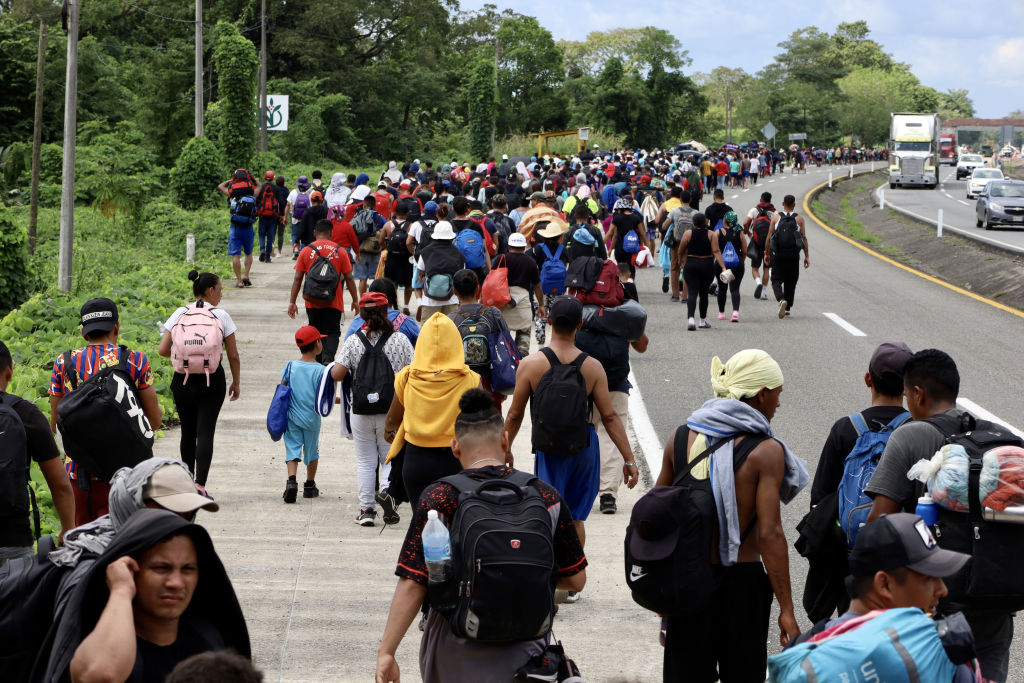Clinton Signals U.S. Support during Mexico Visit
Clinton Signals U.S. Support during Mexico Visit
The U.S. Secretary of State reiterated Washington’s support for Mexico’s fight against organized crime after leaked cables indicated doubts. Meanwhile, Mexico’s troubled border region shows positive economic signs as manufacturing jobs sprout.
U.S. Secretary of State Hillary Clinton made a one-day stop in Mexico for a bilateral tête-à-tête with Foreign Secretary Patricia Espinosa in the colonial city of Guanajuato before a visit to the capital to meet with President Felipe Calderón. The two secretaries broached a range of topics—from climate change to Haiti to economic ties—during their reunion. But Clinton’s praise for the Calderón government’s war against drug cartels arguably attracted the largest amount of press hits.
Clinton’s visit was the latest in a series she’s made to stress Washington’s “co-responsibility” in Mexico’s violent drug war, given the U.S. role in drug consumption, money laundering, and arms trafficking. American and Mexican press alike posited that her sudden visit, announced late last week, sought to heal a rift over leaked State Department cables that indicated doubts about Mexico’s ability to control the violence. Clinton would not respond to specific questions about the now-infamous Wikileaks documents, but reiterated that “the United States remains committed to helping the Mexican Government go after the cartels and organized crime and the corruption they generate.”
Last year, Clinton compared Mexico’s fight against narcotraffickers to Colombia’s struggle against cartels and guerillas. This time she chose to make a comparison that struck closer to home: “I’ve represented the State of New York, and a lot of people remember there was a time 20 or 30 years ago when people thought New York was going to be lost to gangs and drugs and crime.” Encouraging Calderón’s successor in 2012 to continue the fight, she added that, in New York, “through hard work by law enforcement and a lot of support and a lot of reform, we’ve seen a real change.”
Sadly, Clinton’s trip coincided with more sad news of bloodshed. On Sunday afternoon, gunmen opened fire on youths playing soccer in the troubled border city of Ciudad Juarez. Seven died in the massacre. More than 35,000 lives have been lost since Mexico initiated its offensive against cartels four years ago. 2010 marked the bloodiest year yet, with the death toll tally coming in at over 15,000.
Despite such tragic figures, Mexico’s border region can trumpet some positive news as well: the country’s maquiladora industry shows signs of rebounding. As the Associated Press reports, factories in Ciudad Juarez added 26,000 jobs between July 2009 and August 2010. The city received over 100 permits for new plants since 2008 and, with 15 companies seeking to expand operations there, the city could see thousands of new jobs created. The improvement is attributed to a narrowing gap between Chinese and Mexican labor costs and Mexico’s access to the U.S. market. Moreover, an article published on The Atlantic’s website highlights the role of local business leaders in supporting efforts to end violence and boost rule of law.
With Mexico’s GDP forecasted to grow by as much as 4.5 percent in 2011, Clinton’s visit also offered the change to stress the close economic ties; cross-border trade amounts to $1 billion each day.
Learn more:
- Read past AS/COA news analysis articles on Secretary Clinton’s official visits to Mexico.
- State Department’s DipNote blog on the bilateral meeting in Guanajuato.
- Government of Mexico statement on Clinton’s meeting with Calderón.
- The Atlantic carries an article on the role local business leaders are playing in Ciudad Juarez to combat crime.







